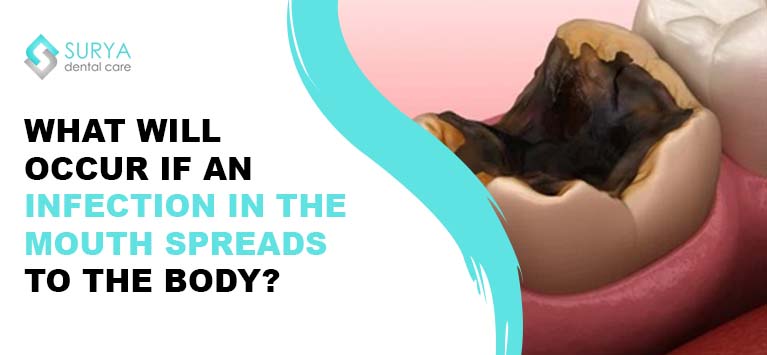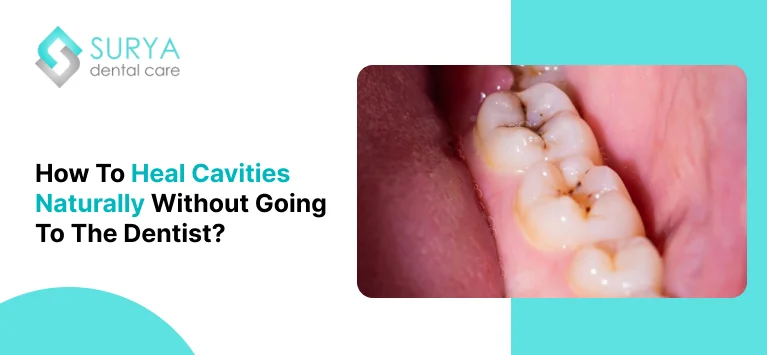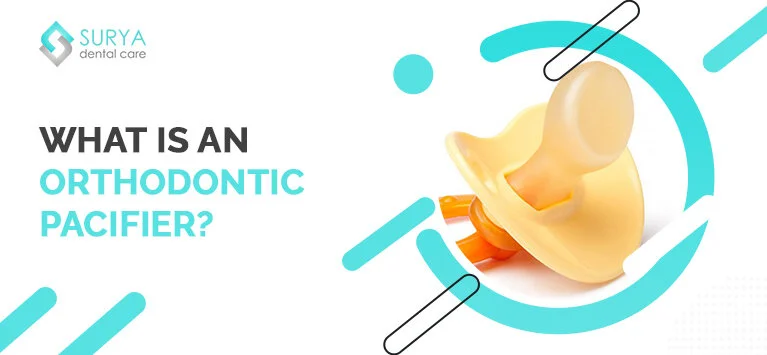
Without the proper care and correct treatment, untreated tooth infections can spread to other parts of your body and you may have serious health complications in the future.
In this blog, you will learn what is tooth infection, its symptoms, the impact of it expanding to the body, and how to avoid this from happening.
What is a tooth abscess or dental infection?
A bacterial infection can cause a pus-filled tooth that can develop in various parts of teeth which is known as an abscessed tooth.
It is also referred to as a dental abscess. It may cause mild to severe pain from an infected tooth and might occasionally radiate to your neck or ear.
You may experience the following signs of a tooth abscess:
- Severe throbbing pain in the tooth can spread to the jawbone, neck, or ear.
- You may feel pain or discomfort when chewing or biting.
- High sensitivity to the temperatures of food and drink.
- A pus-filled pocket like a pimple around the gum line.
- Painful swollen lymph nodes in your neck or beneath your jaw.
- Bad taste in your mouth.
- Fever
- Swelling in your face, cheek, or neck could make it difficult to breathe or swallow.
- Bad breath
- Change in tooth color
The infection of the tooth will not worsen if you receive proper treatment. So you should get a dental check-up once you notice an abnormality from your mouth radiates to your body.
Symptoms of tooth abscess spreading to the body
You may experience an unpleasant salty taste in your mouth if the infection ruptures from the drainage point. After the drainage point, you can stop experiencing any pain or discomfort and believe that problem is resolved. But, knowing that this is not true will make you sad.
Because the rupture is the first sign of the spreading to the body. The entrance of the infection leads to other serious health issues one of which is known as sepsis. It may lead to bacterial endocarditis. The heart valves and linings are severely damaged in this situation. It is brought on by an infection that spreads from other organs to the heart.
Therefore, you should get medical help as quickly as you can if you observe a rupture. Usually, the burst of abscesses doesn’t happen on its own. This typically occurs when the problem worsens.
Therefore, you should seek medical assistance right away even if there is no rupture. The following are symptoms indicating that the infection of the tooth has started to spread throughout the body,
- High fever
- Visual changes
- Nausea and vomiting
- Dehydration
- Dark urine
- Increase in heart rate
- Severe persistent headache
- Difficulty in breathing
- Swelling on the gum, face, neck, and jawbone.
- Stomach problems
- Personality changes
- Itchy or burning skin
- Drooping eyelids
- Loss of consciousness
- Difficulty swallowing, speaking, and chewing
Treatment options for dental abscess
Treatments may vary depending on the causes and severity of the tooth infection.
1) Root canal treatment
During this treatment, the dentist will remove the affected dental pulp. Abscess drainage could also be a part of this procedure.
After removing the pulp the root canal will be cleaned, shaped, and sealed. Then a dental crown will be placed on top of the treated tooth once the tooth has recovered.
2) Dental abscess drainage
Your gums will be slightly incised by the dentist to drain the abscess, and then cleaned by rinsing them with saline solution (salt water).
To keep the space open for drainage over time, the dentist will occasionally additionally insert a small rubber drain there temporarily. Typically, this is only a temporary solution and additional treatment may be required.
3) Antibiotics
In order to treat the infection and prevent it from radiating, your doctor may prescribe an antibiotic. These medications may be prescribed before, during, and after the incision and drainage process.
4) Apicoectomy
After a root canal treatment, your toothache and infection may occasionally return. If so, you might require a minor dental procedure called an apicoectomy. It eliminates the tip of the tooth’s root called the apex.
It involves a surgical incision at the gum’s root and drilling part of the tooth root’s tip away. This procedure eliminates any infected tissues and seals the tooth from the root end.
5) Sepsis treatment
It is a deadly medical condition that happens when the immune system overreacts severely to a blood infection.
If it is left untreated it might result in septic shock. It lowers blood pressure which leads you to run the danger of organ failure and death.
If you get sepsis, you will have to go to the intensive care unit (ICU). Your doctors will provide IV antibiotics as well as fluids to treat sepsis. If you have serious organ damage, you could require additional treatments.
6) Tooth extraction
In some cases, if the root canal treatment is not a possibility the affected tooth may need to be extracted.
Prevention Tips
You can take a variety of actions in your daily life to help you prevent developing tooth infections. Including,
- Use toothpaste with fluoride to brush your teeth twice a day.
- Use floss or an interdental brush at least once a day to clean between your teeth and under gum lines.
- Lower your intake of starchy and sugary foods and beverages.
- Swap your toothbrush every three to four months.
- Visit your dentist for dental checkups and teeth cleanings every six months.
- Use an antiseptic or fluoride mouthwash or mouth rinse to provide an additional layer of protection against harmful bacteria and tooth decay.
- To reduce inflammation consume natural anti-inflammatories such as curcumin, green tea, fish oil, resveratrol, etc.
- Ibuprofen is also effective but it has some unwanted side effects.
- Eat healthily and drink fluoride-containing water.
These are all simple tips that should be a regular part of your dental hygiene regimen.
Take away
If you are experiencing any of these mentioned symptoms, this is a signal that reminds you to make an appointment with your dentist as soon as possible. It can be treated effectively via many treatment options.


















Leave a Comment